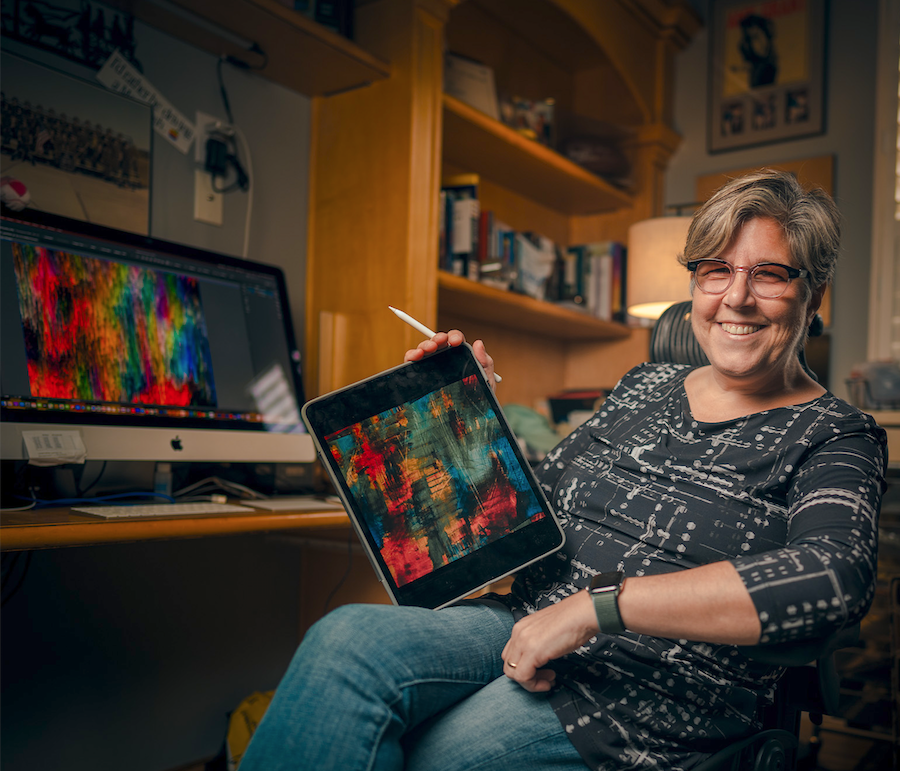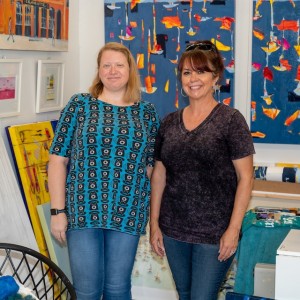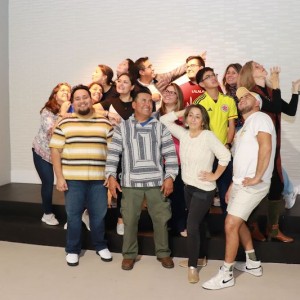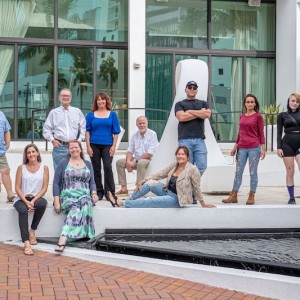It looks like a portal to another world, the central star flaring and eclipsed by prismatic, crystalline structures giving way to layers of pseudo-topographical lattice and shadow. On one hand, the effect is cosmic, evoking vast infinitudes, emergence. On the other, it feels almost intimate and intrusive, as though the viewer were positioned within the eyeball of another, peering outward and stealing this fugitive moment from the inside. It hangs on the wall inside the home of its creator, digital artist Diana de Avila.
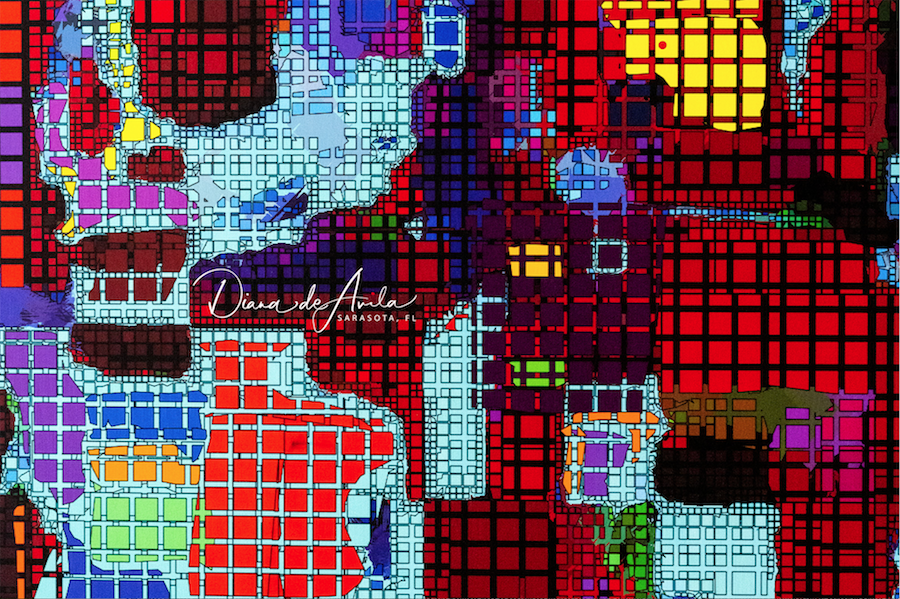
“I woke at 2 am with a vision and did it in a bout of insomnia,” she says casually, and one thing becomes immediately clear: 400 years ago, they would have burned her at the stake. Since 2017, de Avila has been blessed with what she calls an “artistic gift,” manifesting not only in visions but the creative compulsion that she feeds with the hundreds of programs and thousands of equations and growing repository of code that she uses to create her art. “It came magically,” she continues with a mischievous grin, not at all helping her case with the scared Puritan demographic. “So completely sudden.”
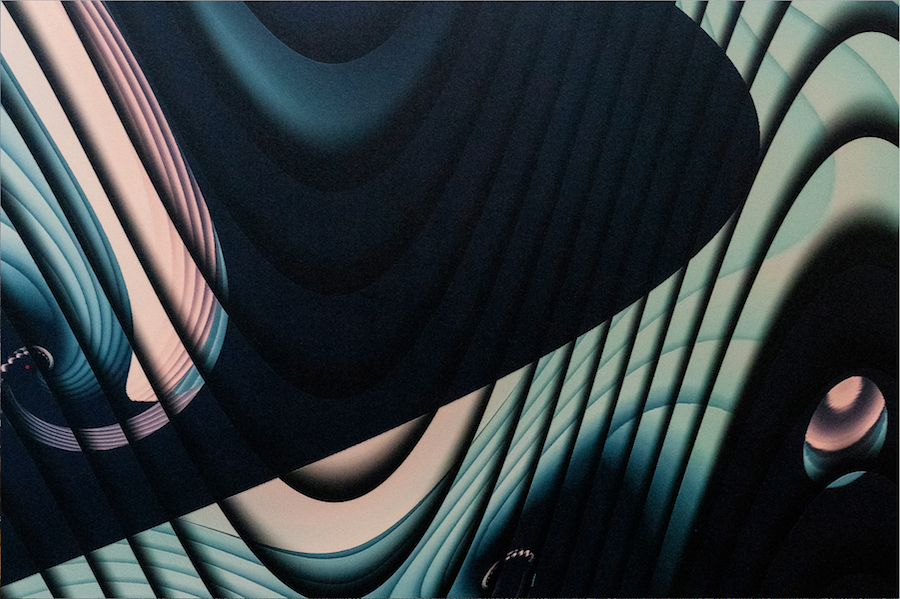
But there is no dark magic or devilry at play here. No witchcraft or cursed compact. Rather, de Avila has what is known as acquired savant syndrome, an exceedingly rare condition wherein traumatic brain injury or illness results in the emergence of an extraordinary skill. In de Avila’s case, it was both a helmet-splitting motorcycle accident while serving in the military and a years-long relapse of multiple sclerosis that eventually resulted in synesthesia and an artistic awakening. She can’t quite explain where her visions and ideas come from, but neither can the science.
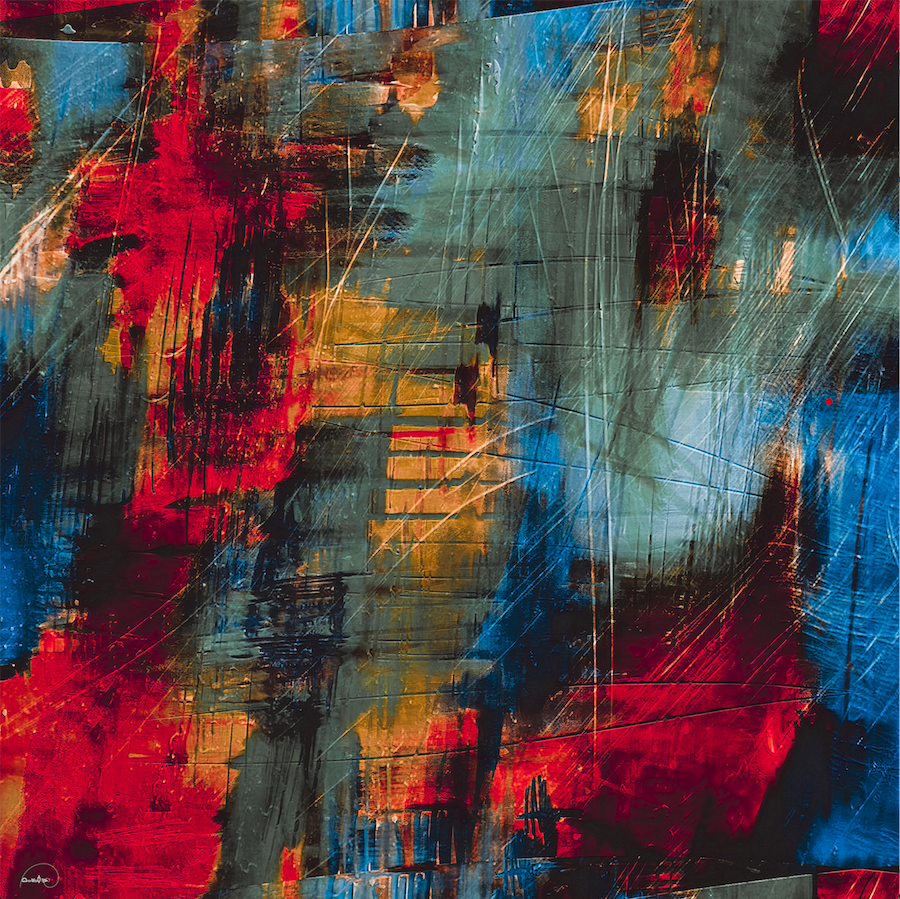
All she can do is follow them. Create when the images appear and the compulsion strikes. And where other artists turn to oils and acrylics, pastels or pencils, de Avila turns to one of her many devices—computers, iPads—and the limitless expanse of a digital canvas where she can indulge her wonder.
De Avila had never heard of fractals before her awakening but now they dominate her brainspace, appearing in front of her eyes of their own volition and searing their imprints on her grey matter, tattooed onto her thoughts. She finds them entrancing, becoming lost in their endless permutations, the beckoning profundity of their self-similarity that speaks to a paradox of both endless complexity and sublime simplicity.
And so when one appears to her, de Avila has no choice but to pursue—to boot up some of the hundreds of computer programs that she’s learned to navigate and manipulate since receiving her gift (an intuitive understanding of and enthusiasm for these labyrinthine programs and systems being another side effect of her savantism) and rediscover, in a sense, that fractal image. She may not be wielding a paintbrush, but by inputting equations and adjusting variables, she defines the parameters of her digital creation and commands the artificial intelligence that calculates the myriad curves, colors, lines and shapes, building the image piece by piece.
Importantly, however, de Avila is no prisoner to the fractal image. Though her art begins from such a calculated starting point, mapped and plotted by mathematical axiom, bound by the confines of artificial intelligence, it quickly becomes but a playground for de Avila’s artistic intuition. In this digital space, the laws of trigonometry become as malleable as any paint or pigment, and de Avila, from her position as artist, begins to manipulate the expression of mathematical truth into something, in her eyes, even more perfect. “I’m trying to take what’s flying in front of my face and turn it into reality,” she says.
The resulting fractal manipulations vary from the trippy Journey With Morpheus, created in part through 30,000+ individual quadratic Bézier curves, plotted and overlaid to create that topographical effect, to the impressionistic-looking Tree of Life and even the near-photorealistic clouds and shoreline of Simple Things. The only devilry lies in the details, where de Avila’s digital brushstrokes can be seen in the multitudinous arcs and curves.
Although sudden acquired savant syndrome remains rare, experts identify three stages, broadly speaking, that artistic savants experience as they explore their dormant talents: imitation, improvisation and creation. For her own part, de Avila finds this to ring true. Her early work and her first show, an open call at Art Center Sarasota, had a distinctly Mondrian flavor to it, followed by forays into the abstract that belied an artist in flux, still seeking. And she remembers when she found her voice, at the end of 2019. “I became my own artistic self,” she says.
There was no grand dramatic moment or climactic realization, no fanfare to announce its arrival, but rather the sneaking confidence that comes only from doing the work and embracing the artist within. “I learned to go with it,” de Avila says. “I trust in my intuition and I trust in the process.”
De Avila’s latest series, a quartet of fractal manipulations based on the physics of a crashing wave and printed on textured metal, is on display in this month’s “Shifting Perceptions'' exhibition at SPAACES, where de Avila will show alongside artist Julie Kanapaux.




